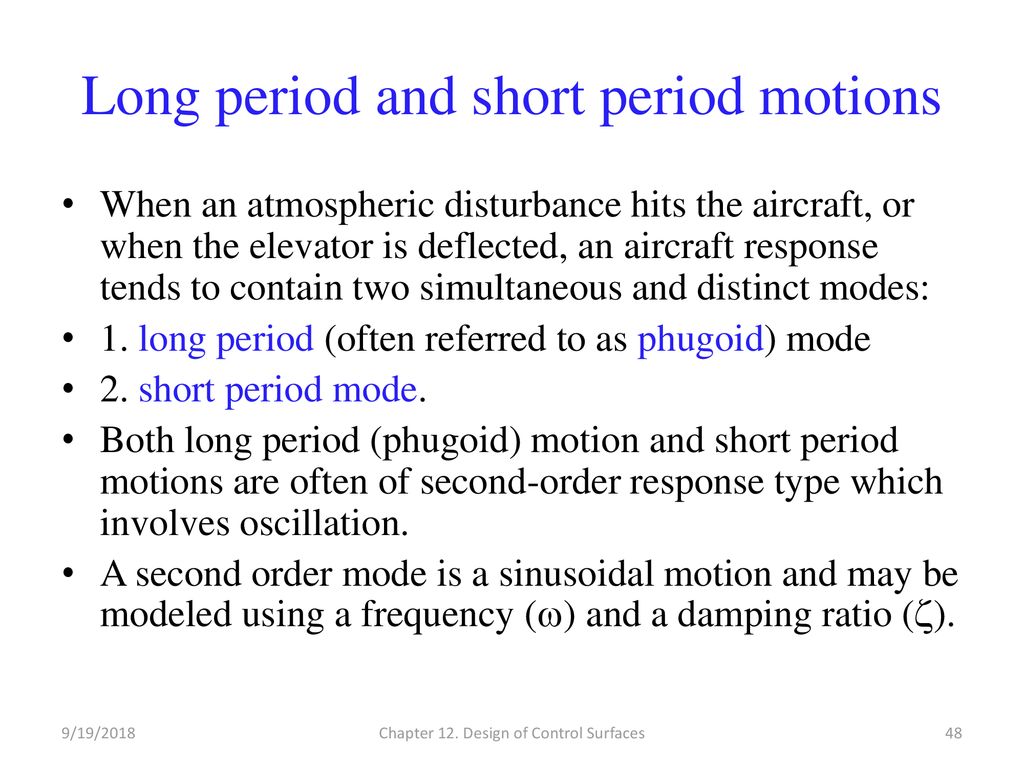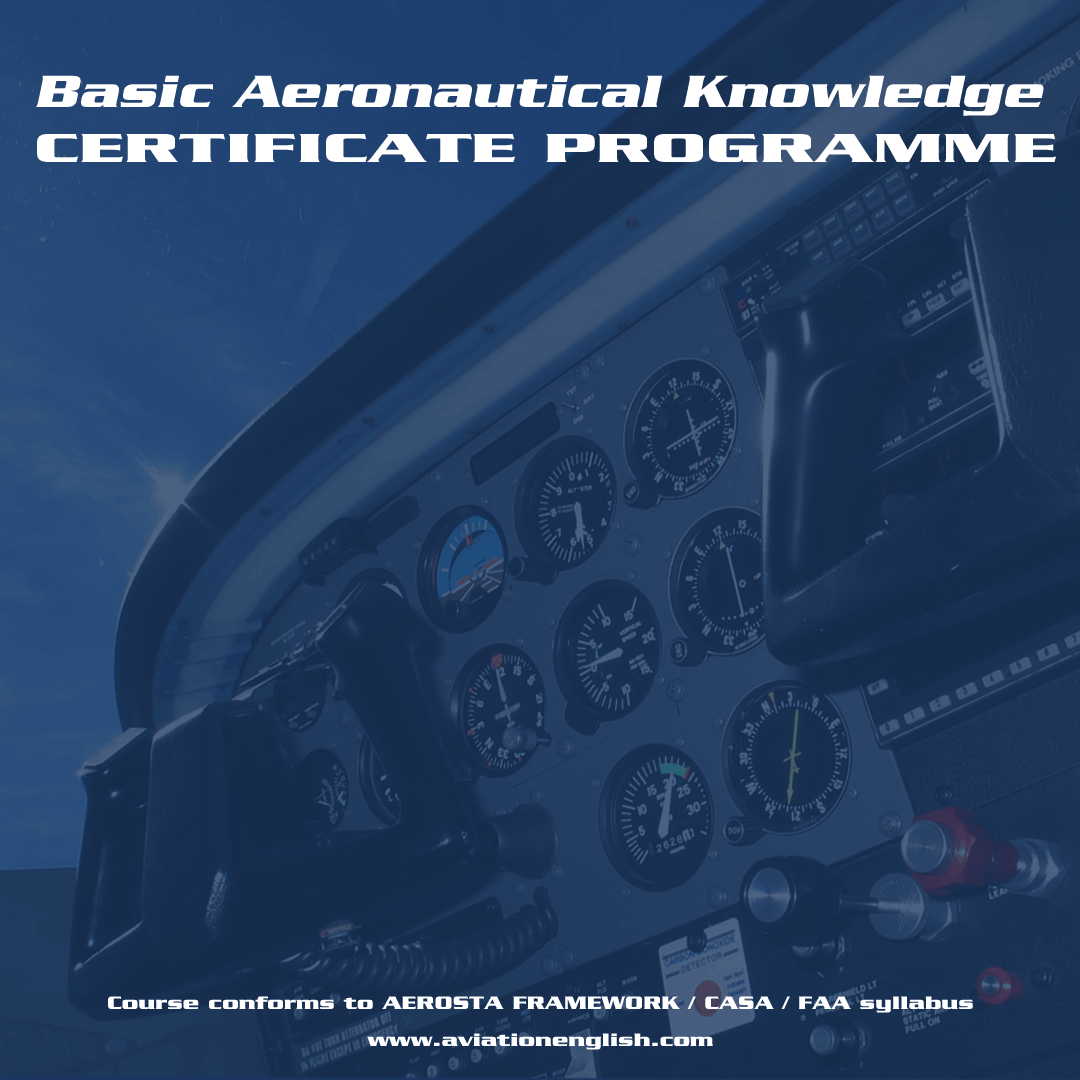Short Period Oscillation Aircraft - Stack Exchange is a question and answer site for aircraft pilots, mechanics and hobbyists. It only takes a minute to sign up.
As a more specific question, what is the settling time when the aircraft (eg a B747 or an A320) goes from the climb phase to the cruise phase at the top of the climb?
Short Period Oscillation Aircraft

Here is the answer from a 180-passenger subsonic simulator: The first period lasts about 87 seconds.
Msc Thesis: Flight Simulation Model From Flight Test Data
From the trimmed position, activate the phugoid mode by applying the longitudinal control in one direction to change the air speed by about 10 knots, then release.
To answer the additional question of when the amplitude of the resulting movement will be below 0.1 degrees, I made a digital simulation according to this block diagram:
And then added the spring stiffness C, the inverse inertia 1/M, and the damping constant K until the resulting response overlaps the original aircraft response. The resulting movement reaches max. amplitude of 0.1 degrees in about 1,600 sec - 27 minutes.
The Phugoid is a rigid body with no hands (ie pilot and autopilot off) with or without a stability augmentation system. MIL-STD-1797B specifies a damping ratio of
Pdf) On The Handling Qualities Of Two Flying Wing Aircraft Configurations
0.04 for quality management level 1. The typical fugoid period is about 90 seconds. This results in a settling time (within 2% of cutting speed) of approximately 24 minutes. This is so long that the settling time itself is not a particularly good measure of phugoid.
What is the settling time when the aircraft (eg a B747 or A320) goes from the climb phase to the cruise phase at the top of the climb?
The climbing level is not a hand. A well-tuned autopilot should be smooth with minimal overshoot and oscillation. The time scale is also very different; We are talking about adjusting the time on the order of a second (not half an hour). And it's not fugoid.

By clicking "Accept all cookies", you agree that Stack Exchange may store cookies on your device and disclose the information in accordance with our Cookie Policy. By "certain aircraft", I mean that the equations of motion we developed are valid for symmetrical, rigid, fixed-wing aircraft in certain flight regimes (small aerodynamic angles, subsonic flight, gentle maneuvers). The planes that fall into this category generally show the same five characteristic movements, which we will divide into longitudinal and lateral modes.
Flight Systems (dynamics) Lab Report Introduction With All Types Of Aircraft In The World All Come
The transient response of the aircraft due to impulsive excitation has been explored and shown to contain:
As discussed in the previous section, the modes of motion are related to the eigenvalues in the matrix \([A]\).
There are two complex pairs of eigenvalues associated with the longitudinal equation of motion, and these give the two longitudinal modes of the aircraft - the Short Period Mode and the Phugoid Mode.
If a trimmed aircraft is subjected to pitch lift or vertical gust, it will enter a pitch motion. The plane tends to oscillate in pitch for a short period of time (which means it is heavily damped). Consider the plane in Figure Fig. 57.
Flying Qualities Reduction Of Fly By Wire Commercial Aircraft With Reconfiguration Flight Control Laws
Compared to the mass/spring/damper system, an analogy can be made with the bronze mode of short periods - the horizontal tail effectively provides rigidity (
) due to the "weathercock"1 tendency of the HTP to align the aircraft \(x\) axis with the incident flow. The aerodynamic and viscous forces created by the tail due to its motion below a pitch rate provide damping. A balance must be sought with the damping, since too much damping means that the pitch response of an aircraft is quite weak (therefore slow, uncontrollable), while too little damping can cause stalling problems in the mode of short periods.
The angle of attack changes rapidly, but there is usually no perceptible effect on airspeed. For a small and/or maneuverable aircraft this may be less than a second, and for a larger or slower aircraft it may be several seconds.

Phugoid is an oscillation with almost no change in the angle of attack. There is some damping, and this mode can be unstable, but the response of the aircraft is usually so slow that it is corrected by a pilot with little effort.
Tecquipment Flight Demonstration Wind Tunnel
The physical mechanism of the Phugoid is effectively an exchange of gravitational potential energy and kinetic energy. If an aircraft receives a forward velocity perturbation (a headwind), then the lift and yawing moment increase, increasing \(\theta\). Since \(L>mg\), the plane descends giving a negative \(w\). Increased forward speed, reduced \(w\) and increased \(\theta\) means the aircraft will climb with little or no change in angle of attack. The plane initially accelerates upwards as \(L>mg\), until \(L=mg\), at which point it has vertical kinetic energy - so it continues to climb
While decelerating, with a reduction in pitch, until the vertical kinetic energy has been converted into gravitational potential energy. At this point \(L
For a stable Phugoid mode (like most), the oscillation is one of decreasing amplitude (by the definition of stable). Therefore, for the figure shown, \(dH_1>dH_2\). Operated in a vacuum, you will not see a damping of this mode2 - so the damping can be considered a "traction damping" because it absorbs part of the energy, so the exchange between the kinetic and gravitational potential is not perfect.\
The appropriateness of the derivation is perhaps diminished by the fact that the word \(\phi\nu\gamma\eta\) means escape in the sense of
Basic Aeronautical Knowledge
I think this shows that Lanchester thought about the term and used it for a while, then realized (or more likely was told by his editor) that it had the incorrect etymology, but he used it anyway. for so long. that she was stuck.
Spiral mode occurs primarily because of the means by which an aircraft changes direction as it turns. If a coordinated pitch turn occurs with increasing or decreasing radius, then this is a stable or unstable spiral mode, respectively, without oscillations. Therefore, with a turn of increasing radius, there is a negative real eigenvalue and with a turn of decreasing radius, there is a positive real eigenvalue. The unstable mode causes a turn of increasing radius, hence the term "spiral" mode.
When the mode is stable, the mode produces a turn with an increasing radius until the aircraft just flies in a new direction (the flight in a straight line can be thought of as a turn with an infinite radius). When the mode is unstable, a large roll angle can accumulate over time without the pilot noticing because of the slow accumulation.

Typically, spiral mode is slow to the point where it is corrected by the pilot without conscious intervention. If a pilot not qualified for the instrument is flown in instrument conditions with little or no visual cues, however, high roll angles can build up to the point of a spiral called a graveyard.
Technique: Along For The Ride
The human ear effectively has an elegant accelerometer package, the "vestibular apparatus," comprising three fluid-filled channels aligned along three mutually orthogonal axes. The cilia in these channels can detect the direction and magnitude of fluid movement above a certain threshold and therefore correlate this with an angular frequency (the brain is incredible - your central nervous system can do integration and use the theorem of Coriolis even if you can't). ). There are two more "otolithic" detectors, which detect linear acceleration in the horizontal and vertical planes.
The human brain combines signals from the canals and otolithic detectors to determine attitude in 3D space. Why only angular
Can be detected, if the aircraft is in a coordinated turn, then the centripetal acceleration means that the otolithic detectors "see nothing wrong" - they tell the brain that it is aligned with the gravity vector (because it is aligned with the vector net of gravity and centripetal acceleration) and no angular frequency is detected because the angular frequency is less than the threshold in the inner ear.
While the pilot does not feel any damage, the plane turns into an increasingly tight spiral until the centripetal acceleration is so great that it is felt through the seat (at this point you can feel something through the seat of the pilot's trousers).
Gull Dynamic Pitch Stability Is Controlled By Wing Morphing
Without looking at the artificial horizon, a pilot can feel the movement of the nose down and think that he is in a wingspan, in which case, he will try to correct it by pulling back on the yoke or the joystick (increases the deviation of the elevator) - which would be the correct action for a wing dive. However, as we learned in Banked Turn, this will increase the load factor and thus also decrease the turning radius - tightening the spiral further and further increasing the rate of descent. The still unconscious pilot will pull harder and harder, which only serves to make everyone on board dizzy at the inevitability of the plane.
Natural period of oscillation, time period of oscillation formula, define period of oscillation, what is period of oscillation, period of oscillation pendulum, oscillation period, short period oscillation, how to find period of oscillation, period oscillation equation, how to calculate the period of oscillation, period of oscillation of a simple pendulum, period of oscillation calculator
0 Comments